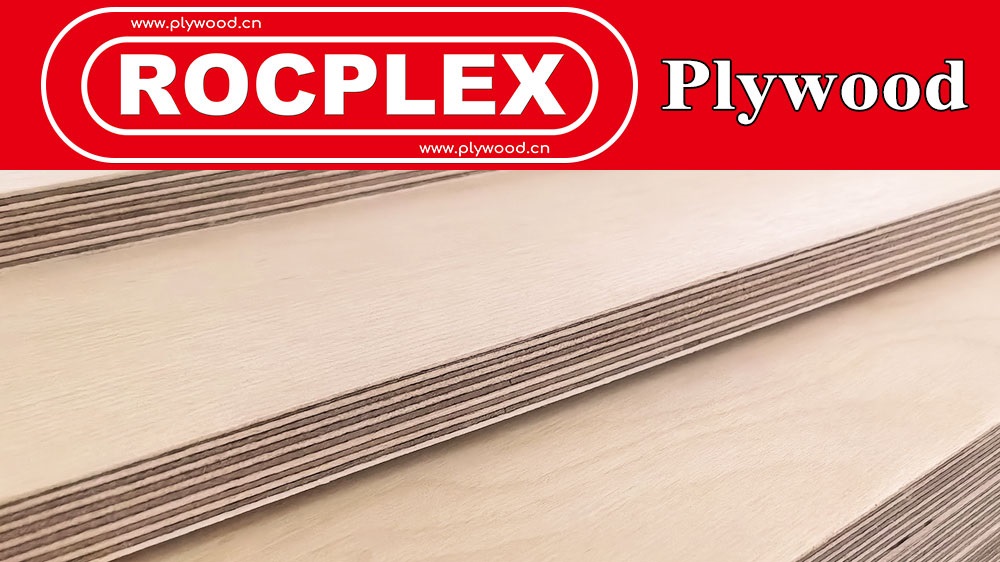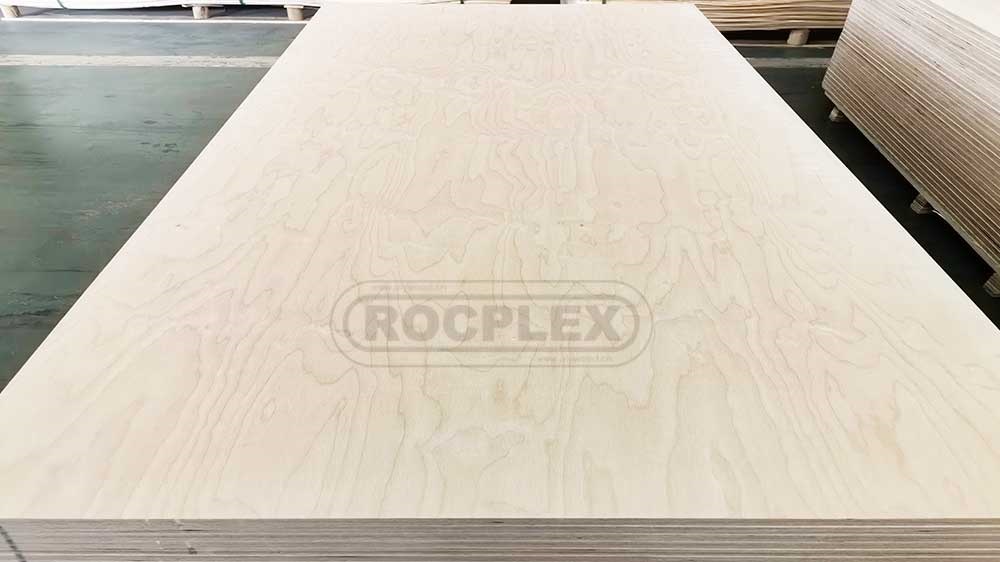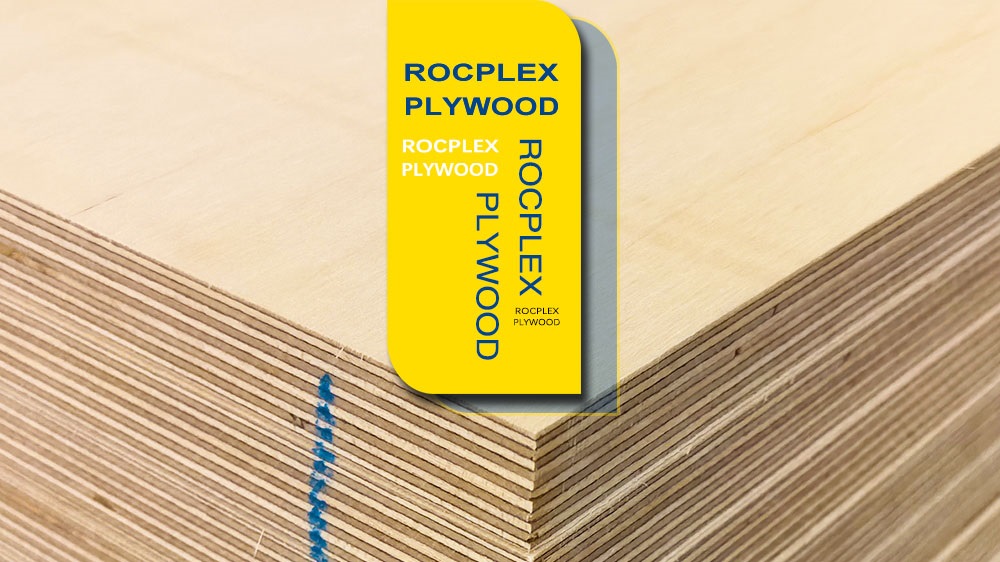What is Plywood 4×8?
Plywood 4×8 refers to standard sheets of plywood that measure 4 feet by 8 feet in size. These wood sheets are constructed from multiple layers of veneer, with each layer oriented at a 90-degree angle to the one below it. This cross-grain design enhances the plywood’s strength and reduces the risk of warping or cracking. Plywood 4×8 sheets are highly versatile and widely used in construction, furniture making, and DIY projects.
These sheets are available in various thicknesses. They typically range from 1/8 inch to 3/4 inch. They are made from softwood, hardwood, or engineered wood materials. Their durability makes them a reliable choice for many uses. Their relatively low cost adds to their appeal. They are widely used in structural flooring and roofing. They are also popular for cabinetry and wall paneling. This versatility makes them an attractive option for diverse applications.
Plywood 4×8 is especially popular in construction due to its large size, which allows builders to cover more area with fewer joints. This reduces the likelihood of weak points in the structure and ensures a more uniform, sturdy surface. Whether you’re building a house, crafting furniture, or working on home renovations, plywood 4×8 is an essential material that offers both functionality and cost-efficiency.
Why Choose Plywood 4×8 for Your Next Project?
Strength and Durability
One of the main reasons plywood 4×8 is so widely used in construction and DIY projects is its impressive strength. The layered structure of the plywood, where veneers are glued together with alternating grain patterns, enhances its overall durability. This structure helps the plywood withstand pressure and weight without cracking, making it suitable for load-bearing applications like flooring, roofing, and wall sheathing.
Compared to solid wood panels, plywood 4×8 is less likely to warp or split when exposed to moisture or fluctuating temperatures. Its resistance to such environmental factors makes it ideal for both indoor and outdoor use. Whether you’re building a deck or constructing furniture, plywood 4×8 offers long-lasting performance.
Versatility Across Applications
Plywood 4×8 sheets are incredibly versatile, making them suitable for various applications. These timber panels are commonly used in construction for subflooring, wall sheathing, and roofing. Plywood sheets can also be used for non-structural purposes, such as furniture making, cabinetry, and decorative wall panels.
In addition to standard softwood and hardwood plywood, there are specialty options like laminated plywood and engineered wood. Laminated plywood features a protective top layer, which can be designed for aesthetic purposes, while engineered wood offers enhanced strength and resistance to moisture. This variety allows builders to choose the best plywood type based on their project’s specific needs.
Cost-Effective and Efficient
Plywood 4×8 is a cost-effective material, especially when compared to solid wood. Its large sheet size allows for fewer cuts and joints, saving both time and material costs during construction. This efficiency makes plywood sheets a preferred option for large-scale projects, such as home builds, renovations, and commercial construction.
Moreover, the affordability of plywood doesn’t mean sacrificing quality. Plywood sheets maintain structural integrity over time, offering a budget-friendly solution without compromising on performance.
Types of Plywood 4×8 and Their Uses
Softwood Plywood
Softwood plywood is made from softwood trees like pine, fir, or spruce. This type of plywood is commonly used for structural applications in construction. It is ideal for subflooring, roofing, and wall sheathing, thanks to its strength and resistance to bending. Softwood plywood sheets are typically less expensive than hardwood options, making them a popular choice for general construction.
Hardwood Plywood
Hardwood plywood is crafted from hardwood species such as oak, maple, or birch. This type of plywood is known for its strength and durability, making it suitable for high-end furniture, cabinetry, and decorative applications. Hardwood plywood is more expensive than softwood varieties but offers superior strength and a more attractive finish.
Laminated Plywood
Laminated plywood consists of a plywood core with a decorative or protective laminated surface. This type of plywood is often used for furniture, countertops, and cabinetry where both durability and appearance are important. The laminate layer can mimic the look of various wood species or feature a custom design to suit specific interior styles.
Engineered Wood Plywood
Engineered wood, also known as manufactured wood, is made by binding wood fibers or veneers together under high pressure. Plywood 4×8 made from engineered wood offers enhanced durability, resistance to moisture, and superior strength compared to traditional plywood sheets. Engineered wood is commonly used for structural elements like beams, joists, and flooring where high strength is required.
How to Use Plywood 4×8 in Construction and DIY Projects
Flooring and Subflooring
Plywood 4×8 is a popular choice for subflooring due to its strength and stability. When used as a subfloor, plywood offers a flat and sturdy surface. It provides a reliable base for flooring materials like tile, laminate, or hardwood. The large sheet size reduces the number of joints. Fewer joints create a smoother surface. This minimizes the risk of weak spots in the flooring. Properly installed plywood ensures long-lasting and stable flooring performance.
For flooring applications, plywood sheets are typically installed over floor joists, with the thickness of the plywood depending on the spacing of the joists. Thicker plywood (e.g., 3/4 inch) is used for subfloors in high-traffic areas to ensure durability and prevent sagging over time.
Wall Sheathing and Roofing
In construction, plywood 4×8 is commonly used for wall sheathing and roofing. The plywood sheets provide a stable base for the installation of exterior siding, shingles, or other roofing materials. The cross-grain structure of plywood helps it resist the expansion and contraction caused by temperature changes, making it an excellent choice for exterior applications.
When used for wall sheathing, plywood enhances a building’s insulation. It also provides a strong and rigid surface. This makes it ideal for attaching exterior finishes securely. Similarly, plywood is commonly used for roofing applications. It adds structural integrity to the roof. This ensures the roof can support the weight of shingles effectively. Plywood also helps the roof resist exposure to the elements, ensuring durability. These qualities make plywood a reliable choice for construction projects.
Furniture and Cabinetry
Plywood 4×8 is also a go-to material for furniture making and cabinetry. Its smooth surface and ability to be cut into precise shapes make it ideal for building shelves, desks, tables, and cabinets. Laminated plywood is especially popular for cabinetry due to its polished appearance and durability. Engineered wood plywood is often chosen for furniture that requires extra strength, such as workbenches or bookcases.
Benefits of Using Plywood 4×8 Over Other Wood Sheets
Strength and Stability
Compared to solid wood panels, plywood 4×8 offers superior strength and stability. The cross-laminated layers of veneer in plywood create a balanced structure that resists warping, splitting, and cracking. This makes plywood sheets ideal for load-bearing applications where strength is critical.
In contrast, solid wood panels can be prone to warping or shrinking when exposed to changes in moisture or temperature. Plywood’s layered construction helps prevent these issues, ensuring long-lasting durability in various environments.
Cost and Availability
Plywood 4×8 is widely available and relatively inexpensive compared to other wood materials. While solid wood panels or engineered wood products can be costly, plywood sheets offer an affordable alternative without compromising on quality. This makes plywood an excellent choice for budget-conscious builders and DIY enthusiasts.
Comparison: Plywood 4×8 vs. Other Building Materials
Plywood 4×8 vs. Solid Wood Panels
When comparing plywood 4×8 to solid wood panels, the most significant difference is in how each material reacts to environmental changes. Solid wood panels are prone to warping, shrinking, or expanding when exposed to fluctuations in humidity and temperature. Plywood 4×8, with its cross-grain layering, is far more stable and resistant to these changes.
Additionally, plywood sheets are more cost-effective than solid wood, especially when used in large construction projects. Solid wood, while offering a beautiful natural finish, is more expensive and requires careful handling and regular maintenance to ensure longevity. For those seeking a balance between strength and cost, plywood 4×8 is the better option.
Plywood 4×8 vs. Engineered Wood
Engineered wood products, such as laminated veneer lumber (LVL) or particle board, also compete with plywood 4×8. Engineered wood is known for its structural strength, particularly in load-bearing applications like beams and joists. LVL beams, for example, are specifically designed to handle heavy loads and are often used in commercial buildings and bridges. However, plywood 4×8 is more versatile and easier to work with in general-purpose construction or home renovation projects.
Another consideration is cost. Engineered wood tends to be more expensive due to the advanced manufacturing processes involved. In contrast, plywood offers a balance between performance and affordability, making it a go-to option for many DIYers and professionals alike.
How to Work with Plywood 4×8: Cutting, Finishing, and Installing
Cutting Plywood 4×8
Plywood 4×8 can be cut using standard woodworking tools, such as a circular saw or jigsaw. For straight cuts, a circular saw with a fine-toothed blade is recommended to minimize splintering along the edges. When making intricate cuts, such as curves or shapes for furniture, a jigsaw works well. To prevent splintering, place masking tape over the cut line before cutting and ensure that the plywood is properly supported.
If precision is essential, such as in cabinetry or decorative applications, using a table saw is ideal, as it provides more control and stability during the cutting process.
Finishing Plywood 4×8
Finishing plywood is an important step if you want to enhance its appearance and protect it from wear and tear. For projects like cabinetry, sanding the surface smooth and applying a stain or varnish can give plywood a polished, professional look. In cases where the plywood will be painted, using a primer before painting helps the finish adhere evenly to the wood.
Laminated plywood, with its decorative surface, may not require additional finishing, though you can still apply a clear protective coat to extend its durability. The choice of finish will depend on how the plywood will be used and the desired aesthetic outcome.
Installing Plywood 4×8
When installing plywood 4×8 for construction purposes, secure the sheets using screws or nails. In flooring applications, leave a small gap between the sheets. This gap allows for natural expansion due to temperature or moisture changes. For roofing and wall sheathing, install the plywood over a layer of insulation or a vapor barrier. This additional layer enhances thermal efficiency and prevents moisture issues. Proper installation ensures durability and performance in various applications.
Using plywood for furniture or cabinetry is a straightforward process. The plywood can be attached to wooden frames or other support structures with wood glue, nails, or screws. For best results, pre-drilling holes in the plywood helps prevent cracking or splitting.
Plywood 4×8 in DIY and Home Improvement Projects
Building Custom Shelving and Storage
Plywood 4×8 is a versatile material for building custom shelves and storage units. The large sheet size allows for fewer joints, creating a seamless appearance, while the strength of plywood provides the necessary support for heavy items. For shelving, 3/4 inch plywood is typically used for its sturdiness, though thinner sheets can be used for lightweight applications.
To create a sleek, finished look, the edges of the plywood can be sanded and covered with edge banding or veneer strips. These finishing touches enhance the overall appearance and hide the layered edges of the plywood.
Creating Durable Outdoor Furniture
Plywood 4×8 is not just for indoor projects. Exterior-grade plywood, designed to resist moisture and weathering, is an excellent option for building outdoor furniture such as tables, benches, or planters. Its large size and versatility allow you to create custom pieces that fit your outdoor space perfectly.
To protect the plywood from the elements, applying a waterproof sealant or paint is essential. Regular maintenance, such as resealing or repainting, will help prolong the life of your outdoor plywood furniture, ensuring it remains durable and attractive for years to come.
The Environmental Impact of Plywood 4×8
In recent years, there has been growing concern about the environmental impact of building materials. Plywood 4×8, like other wood products, is sourced from forests, making it a renewable resource. However, the sustainability of plywood depends largely on responsible forestry practices and certifications like FSC (Forest Stewardship Council), which ensures that the wood used is harvested sustainably.
In comparison to solid wood, plywood uses fewer raw materials, as the veneers are made from thin layers of wood, allowing for more efficient use of timber. Additionally, plywood manufacturing often produces less waste than solid wood milling, making it a more eco-friendly choice for environmentally conscious builders.
Plywood 4×8 Frequently Asked Questions (FAQs)
Q: What is the standard thickness of plywood 4×8 used for flooring?
A: The most common thickness for flooring applications is 3/4 inch plywood. This thickness provides the necessary strength and stability for subfloors in high-traffic areas.
Q: Can I use plywood 4×8 for roofing?
A: Yes, plywood 4×8 is commonly used for roofing. Exterior-grade plywood is recommended for roofing applications to ensure moisture resistance and long-term durability.
Q: How does plywood 4×8 compare to engineered wood?
A: Plywood 4×8 is more versatile and easier to work with in general construction projects, while engineered wood products like LVL beams are typically stronger and used for load-bearing applications.
Q: What is the best way to finish plywood 4×8 for furniture making?
A: Sanding the surface smooth and applying a stain or varnish can enhance the appearance of plywood for furniture making. Using edge banding helps create a polished finish.
Q: Can plywood 4×8 be painted?
A: Yes, plywood can be painted. For best results, use a primer before applying paint to ensure an even finish that adheres well to the surface.
Plywood 4×8 is a highly versatile and cost-effective material suitable for a wide range of applications in construction and DIY projects. Its strength, durability, and affordability make it a popular choice for flooring, roofing, wall sheathing, furniture, and outdoor structures. Whether you are looking for a stable building material or a creative option for home improvements, plywood 4×8 offers the perfect solution for projects of all sizes.
Post time: Nov-16-2024




